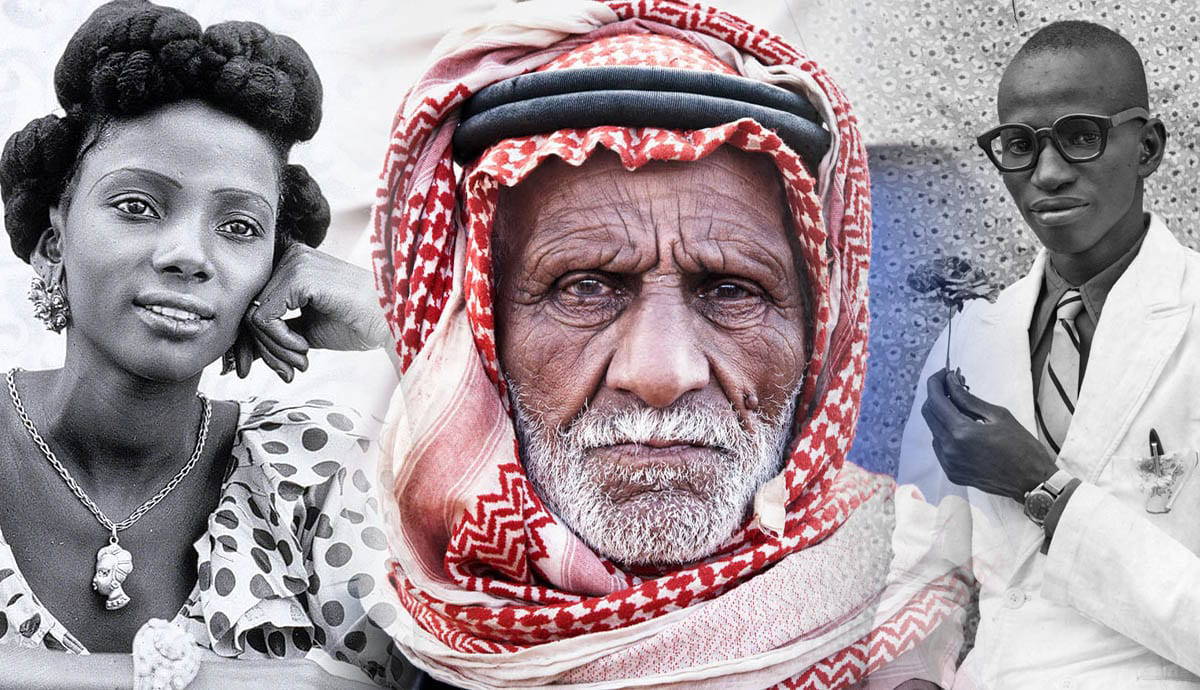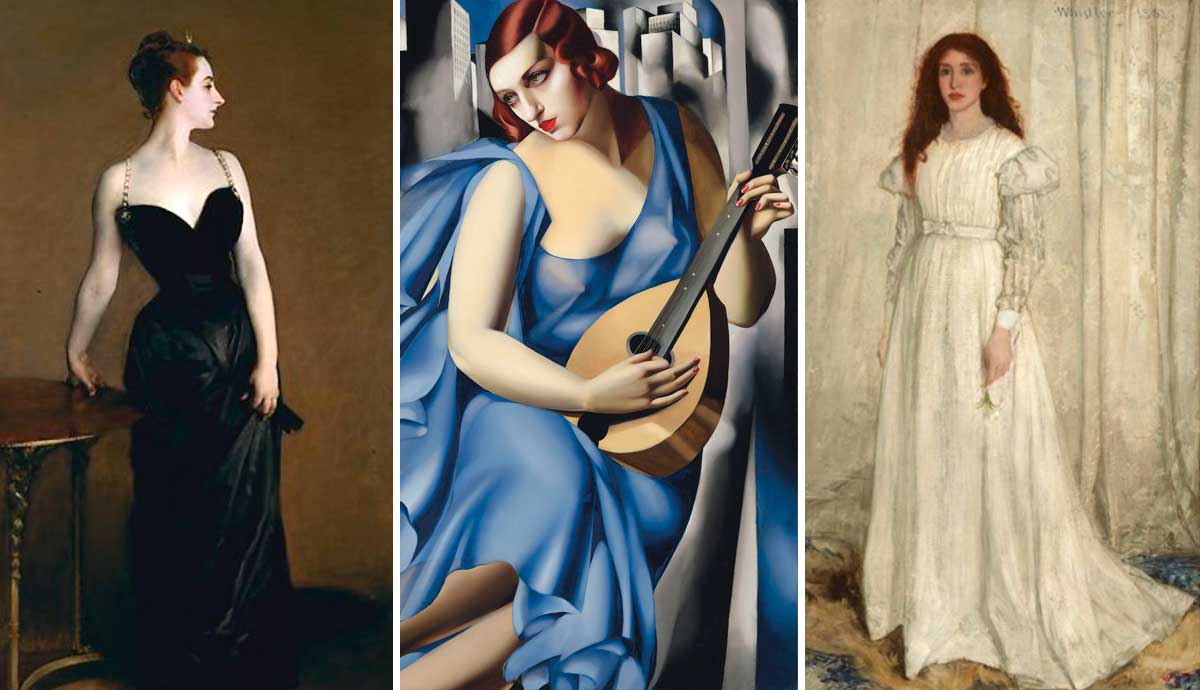
Photography developed throughout the 19th century. Towards the 20th century, it became a more accessible and stable technique. Photography was quickly introduced to all parts of the world by European photographers, such as America, Africa, and Southeast Asia. It rapidly found niches as a trendy and efficient method for faithful documentation. Soon, photo studios started appearing in many countries from Africa to Asia. Most of them were first owned and operated by Europeans, but local photographers learned and started to set up shop quickly. Its artistic possibilities were quickly recognized. Here, we will look at six African photographers from different time periods and three different regions, an attempt to show a slice of the scope of African art photography.
African Art Photography of Malick Sidibé (West Africa)

Hailing from a shepherd family of Soloba in southern Mali, Malick Sidibé was born in 1936 and came to the capital Bamako to study in the colonial arts and crafts school École des artisans Soudanais (Mali was then part of French Sudan). Even though he studied jewelry making, Sidibé’s future and fame would be associated with art photography. He was later known as the “eye of Bamako”. Malick Sidibé started working as an assistant in a photo studio, and he eventually started practicing independently, setting up his own Studio Malick. Studio Malick enjoyed enormous popularity in the 1960s and 1970s, coinciding with Mali’s effervescent early days of independence.
Sidibé is well-known for his studio portraits and photos were taken at events such as parties and nightclubs. However, he also took on commissions to document important events. Later in life, he also dabbled in fashion photography for magazines such as Vogue. Malick Sidibé passed away in 2016. He was the subject of the 2008 documentary Dolce vita africana.

Honored with solo exhibitions held at the Fondation Cartier in Paris and the Somerset House in London, Malick Sidibé enjoys an international reputation as one of West Africa’s greatest art photographers. With his career coinciding with the advent of more portable cameras and electricity in Bamako, Sidibé’s works are known for their incredible capacity to capture the vivacity of Mali’s youth in the studio and other venues alike. His training as an artist calls for attention in the studio to guide his clients to express themselves with natural poses and sometimes fashionable or dramatic props such as sunglasses and motorcycles.
Studio Malick is known to have a laid-back vibe. During the night, he would often have to attend several parties where young men and women are dancing away to the newest hits until dawn, and the African photographer would quickly, sometimes by the next day, develop a folio of photos for the party-goers to come to contemplate and purchase. His works are true documentation of life.
Camera Africa of Seydou Keïta (West Africa)

An older compatriot of Sidibé’s, Malian art photographer Seydou Keïta is a native of Bamako where he was born around 1921. He started taking photos in the 1930s and 1940s with large-format cameras and opened his own very successful photo studio business in 1948. Bamako was gradually transitioning from a colonial center to a cosmopolitan capital. Keïta’s studio remained in business until the early 1960s. His archives are a real treasure trove, containing more than 10,000 negatives. He passed away in 2001. Before that, Keïta work started to gain traction outside of West Africa in the 1990s. Many of his works have since been exhibited extensively in solo retrospectives at international institutions such as the Tate Modern in London or the Minneapolis Institute of Art in the United States.

Keïta’s art photographs document an earlier moment in Malian history than Malick Sidibé’s, with the country on the cusp of independence and a new future. He was mainly a studio photographer, probably more due to technical constraints during his years of practice than out of choice. Seydou Keïta’s careful and precise black and white works, featuring quite some props, are always meticulously composed and demonstrate with ease the personality of the sitter. He is known for his compositions balancing perfectly light, space, and the sitter, finding a position of gravitas and dignity for everyone. His works are a real collaboration with the sitter, showing a deep sense of respect and concern for the subject depicted. Interestingly enough, Keïta’s studio props, be they radios, dresses, or motorbikes, were not randomly chosen, they also reflected the evolution of lifestyle and fashion in Bamako.
South African Photographer David Goldblatt

South African photographer David Goldblatt is often associated with his work about apartheid. Goldblatt was born in 1930 to Jewish Lithuanian parents and passed away in 2018. He became interested in using photos to document life at a young age and would become a full-time photographer in his thirties. Goldblatt would go on to document significant events in South African life such as the brutal and deadly Soweto student uprising in 1976. However, Goldblatt was not interested in the moment of violence, rather the intricate causes that would lead things down that road. His works are held in important international collections and celebrated in retrospectives in institutions such as the Centre Pompidou in 2018.

Goldblatt wanted to show the uncanniness of the superficial normality of segregated life and unspoken racial discrimination and violence. He used his camera to observe the unseen hidden in plain sight of everyday life. For David Goldblatt, art photography endows his observations with tangible quality. His works illustrated South African life across the racial and geographic landscape of the country, with subjects ranging from dying gold mines (On the Mines series) and long commutes Black South Africans had to endure due to segregation (The Transported of KwaNdebele series). David Goldblatt is often personally quite involved in a lengthy process of documenting people and places. Most of his earlier works are black and white, a feature that the South African photographer thought is more representative of the bleak ambiance the subjects and events he captured convey.
Santu Mofokeng (South Africa)

Santu Mofokeng was known for documenting through harrowing images the merciless reality of black life during and after the apartheid in South Africa, such as segregation and extreme poverty. Mofokeng was born in 1956 and raised by a single mother in Soweto. He started his career as a photo studio technician and would eventually graduate into photojournalism and more, becoming one of the best South African photographers.
Mofokeng lived through a turbulent period of South African history, experiencing it first hand as the country tries to transition into a multiracial society and democratic nation. He was a member of the Afraprix collective, which aimed to document political life in South Africa under apartheid censorship. He suffered from a neurodegenerative disease and passed away in Johannesburg in 2020. Mofokeng’s work is celebrated internationally and has been exhibited at venues such as the Venice Biennale. His works were compiled under the title Stories in 21 volumes and published in 2019.

A lot of Mofokeng’s work exhibits an ambiguous and complex quality rather than an obvious display of what easily discernible violence would appear like, sometimes choosing to focus on more intimate suffering bodies and oblique perspectives. The image of Soweto taken in the 1980s is an example of his documenting black townships, seemingly placid but mournful regardless. He was more interested in people as animate and evocative characters living through events and situations, reflecting their minds and liminal states probing at the unknown.
This poetic, spiritual, ominous, and austere quality is accentuated by his black and white photos. Church of God, Motouleng is a good demonstration of Mokofeng’s lyricism and preference for including dynamic photographic elements such as mist or dust, rather uncommon in documentary work. These features continue to transpire through his later work on climate change and land pollution. Through his work, Santu Mofokeng tells the story of a people, for better and for worse.
Hassan Hajjaj (North Africa)

Hassan Hajjaj was born in Morocco in 1961 and grew up in the sunny coastal region of Larache. He would emigrate as a teenager to London, where he had to learn the language and how to adapt to a dazzling metropolis with vibrant club culture. Instead of going to school, Hassan Hajjal started working at an early age and would become the owner of a clothing store in Covent Garden.
From organizing fun and hip events, he would eventually start to take up the camera and start photographing people, famous or ordinary, from all walks of life who would come across his path. Hajjaj is one of Morocco’s best-known contemporary artists, having won many prestigious prizes and is collected in many important museum collections. A prolific artist, his work has been shown in venues such as the Victoria and Albert Museum in London and the Los Angeles County Museum of Art in California.

His work appears very colorful and pop. Indeed, Hajjaj’s photos manifest the feeling of vivacity and playfulness. Some of his most known works include the Kesh Angels series from 2010, depicting henna girls of Marrakech on motorbikes. Hajjaj has also experimented with film and often collaborated with fashion, interior design, or music industries. Hassan Hajjaj’s work uses a mix of Western pop culture and Moroccan visual references, but instead of situating them in stereotypical Orientalizing setups, this art photographer tries to create formal disjunctions that would require the viewer to look again more carefully. The characters come to life and engage in contemporary dialogue, as the cans of globalization would allude to. His are 21st-century portraits. His current works sit at the intersection of photo and film, design and installation, becoming an immersive experience for the viewer.
Art Photography of Leila Alaoui (North Africa)

French-Moroccan African photographer and video artist Leila Alaoui was born in Paris in 1982 and grew up in Marrakech. She was brought up between two cultures and would forge a sensibility navigating identity and differences. She studied art photography at the City University of New York. Her sister Yasmina Alaoui is also an artist. Leila Alaoui was particularly concerned about issues such as identity, cultural diversity, and social justice. She worked for magazines and NGOs and is best known for her work documenting refugees. For example, she worked on a series called Everyday Heroes of Syria in 2015. Unfortunately, her life was cut short in 2016 with her tragic death following a theorist attack in Ouagadougou, Burkina Faso. She was there on a mission to document women’s rights. Her family set up the Leila Alaoui Foundation to celebrate her life and work.

Leila Alaoui was known for using an ephemeral portable studio for portraits. Alaoui would travel with her equipment to Moroccan rural markets, set up her studio, and wait for passengers to approach her. She would then engage with people interested in her work before taking their pictures, sometimes only having the opportunity to take one good shot. Often, these portraits illustrating the diversity of Moroccans were set against a dark background, allowing the viewer to focus on the sitter’s features and accessories.
Her works are known for details and strong contrasts in light. Her oeuvre gives a portrait and a voice to those who have not, such as refugees and women. For Alaoui, migration and displacement do not only happen in Europe but also in other places around the Mediterranean drawing less media attention such as North Africa and the Middle East. She tried to give these encounters a critical look too.










